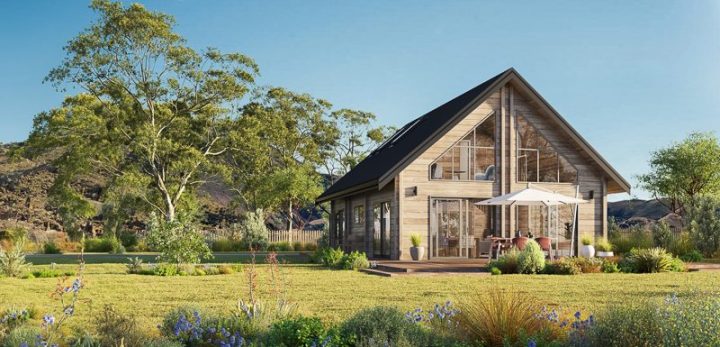
Reducing excess construction waste: Fraemohs Homes
In the name of waste minimisation and reducing the flow to landfills, we consider the packaging of our weekly shop, aspire to natural fabrics over synthetics, and carefully sort our recycling.
Every bit we can do will help. So we need our large industries such as construction to get on board and make serious efforts to reduce the bulk that is dumped.
A leader in so many facets of environmental sustainability, Fraemohs Homes is once again setting the standard by reducing the bulk of its building waste. The team have adopted strategies such as efficient material usage and reducing excess in construction processes. “By 3D Modelling all of our solid timber homes, we can ensure appropriate timber lengths and buy these to suit,” says Business Development Manager Amanda van der Kley.
Fraemohs also recycle and reuse materials whenever possible. “Because we machine untreated timber first and then send it off to treatment, all our sawdust can be reused in the community, such as in chicken coops. Larger offcuts can be used for other timber solutions,” says Amanda. “We use approximately one skip on a Fraemohs Solid Timber build, where with other forms of construction, 3-5 skips may be required due to all the materials and their individual wrapping requirements.” 
Sitting alongside waste reduction as a key aspect of their sustainable practice, is their Thermal Modelling system. “Our system analyses both heating and cooling of our homes, bespoke to the context of the local site and position on that site. Every part of the plan is evaluated, from the use of exposed concrete, to glazing type to insulation, to heating type and size,” says Amanda.
Of course, choosing a Fraemohs Home has always given clients the environmental advantage, right from the very beginning. An incredible natural building material, timber is naturally warm and healthy, carbon negative, good for the economy, and easily handles extreme conditions including massive earthquakes. Each home features timber sustainably grown in New Zealand, meaning no international carbon miles, and no foreign forests plundered.
Research by Dr Larry Bellamy at Lincoln University found “The use of solid wood improves indoor humidity. During the cooler months solid wood acts as a passive dehumidifier in bedrooms during the night, and a humidifier in living rooms during the day. This produces more favourable humidity indoors, which translates into improved comfort and health.”
Solid wood also has a very high strength to weight ratio, providing protection in harsh environmental conditions and situations i.e. earthquakes, hurricanes, cyclones, tornadoes, and typhoons. It is low maintenance, as it does not dent or mark easily, resists staining, soiling, and odour build up.
The non-profit Building Information Foundation RTS found that “wooden buildings have the unique ability to reduce CO2 in the atmosphere. The wood used in a solid wood building stores CO2 as part of its natural composition. Trees replanted after they are harvested for solid wood buildings continue to produce life-giving oxygen while removing and storing more CO2 from the atmosphere.
“Wood products can achieve negative net CO2 emissions – lower than any other building material.” Fraemohs is proud to be leading the way through waste reduction, energy efficiency, and the use of solid timber for carbon neutrality. Amanda adds, “It is very clear that an investment in a Fraemohs Home is an investment in environmentally sustainable living.”



